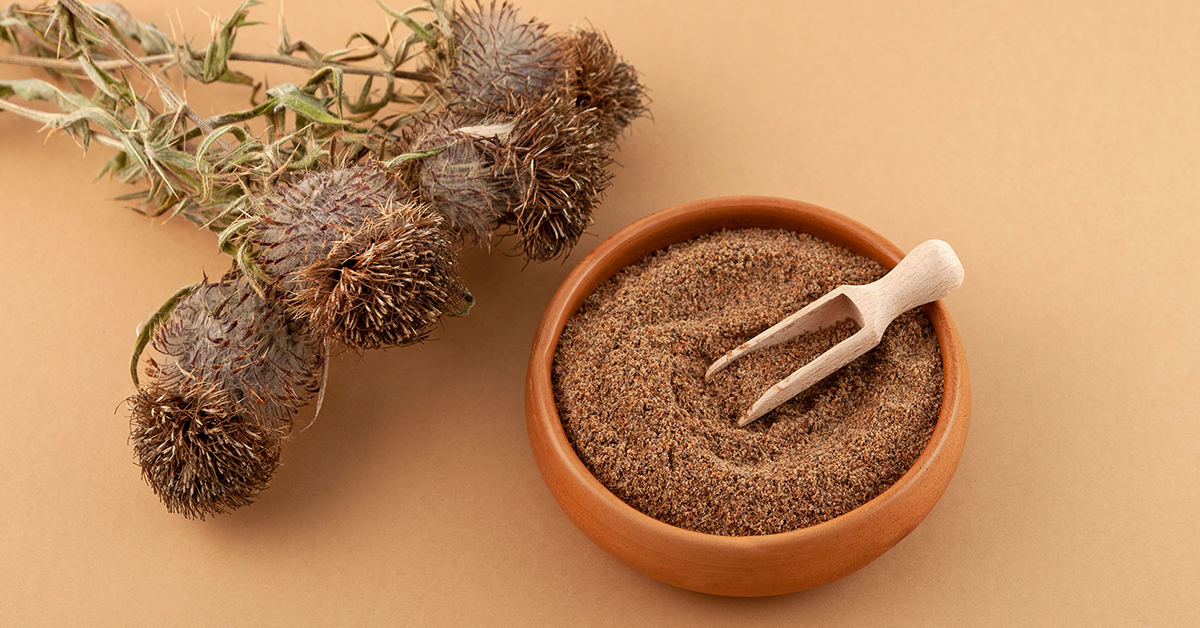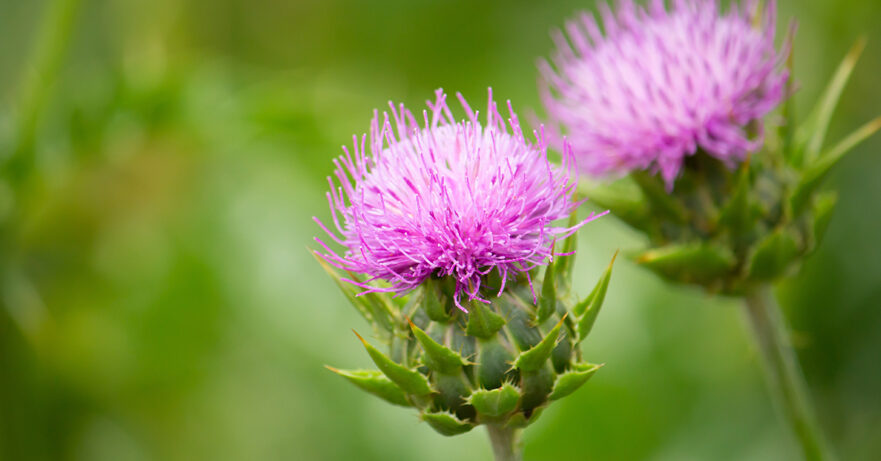In this monograph about milk thistle:
📖 Introduction | 🌱 Botanical Description | 📜 Traditional Uses | 🔍 Phytochemistry | ✨ Applications and Uses | 🛡️ Safety Profile
📖 Introduction
Milk thistle (Silybum marianum) is a flowering plant renowned in herbal medicine primarily for its hepatoprotective properties. Celebrated for its ability to support liver health and detoxification, milk thistle has been used for over two thousand years, with its therapeutic applications extending to modern herbal practices.
| English Name | Milk Thistle |
| Latin Name | Silybum marianum |
| Parts Used | Seeds |
| Traditional Uses | Supporting liver health, detoxification |
| Herbal Actions | Hepatoprotective, cholagogue, anti-inflammatory |
🌱 Botanical Description
Scientific Classification
Silybum marianum is part of the Asteraceae family.
Physical Characteristics
Milk thistle is distinguished by its glossy, marbled leaves with spiky edges and a robust thistle bearing purple flowers. The plant is most notable for the white veins that streak through its leaves, which, according to legend, were caused by a drop of the Virgin Mary’s milk.
Natural Habitat and Cultivation Details
Native to the Mediterranean region, milk thistle has been naturalized worldwide. It thrives in dry, rocky soils and is often found in sunny locations.
📜 Traditional Uses
Traditionally, milk thistle has been employed to treat a variety of liver and gallbladder disorders, including hepatitis, jaundice, and cirrhosis. It has also been used to stimulate milk production in breastfeeding women and to protect the liver from poisoning and environmental toxins.

🔍 Phytochemistry (Active Constituents)
Milk thistle’s medicinal properties are attributed to a complex of flavonolignans known collectively as silymarin, which includes:
- Silybin: The most active component of silymarin, known for its antioxidant and liver-protecting effects.
- Silychristin and silydianin: Contribute to the antioxidant activity and support liver function.
These constituents are key in protecting liver cells from toxins and regenerating damaged liver tissue.
✨ Applications and Uses
In herbal medicine, milk thistle is utilized for:
- Liver support:: Milk thistle is used extensively to support liver health. It is noted to aid in liver detoxification and support the repair of liver cells damaged by alcohol or toxins.
- Antioxidant protection: The silymarin complex in milk thistle acts as a powerful antioxidant, helping to reduce oxidative stress and inflammation.
- Digestive health: Milk thistle is also used to promote healthy digestive function by supporting the liver and gallbladder.
The efficacy of milk thistle in these applications is supported by its rich silymarin content, highlighting its significant role in liver health and protection.
🛡️ Safety Profile
Milk thistle is generally considered safe for most adults when used in recommended doses.
Side effects are rare but can include gastrointestinal upset, headache, or allergic reactions for those sensitive to plants in the Asteraceae family.
Due to its effects on liver enzymes, it could interact with certain medications.
Pregnant and breastfeeding women are advised to consult a healthcare provider before use.
Individuals with specific health conditions or those on medication are encouraged to seek professional advice before integrating milk thistle into their regimen.
